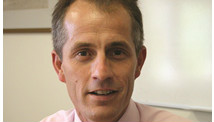From the time he was little, Adam Lanza couldn't bear to be touched. By middle school, the chaos and noise of large, bustling classrooms began to upset him. At 20, just before the Newtown shootings, he was isolated and, the world would later learn, disturbed.
All this was revealed in "Raising Adam Lanza," an investigative report by the Hartford Courant in partnership with the PBS news program FRONTLINE, which aired Tuesday night.
Before the age of 6, Lanza had been diagnosed with a controversial condition, "sensory integration disorder" -- now known as sensory processing disorder, according to the report.
Those with sensory processing disorder or SPD may over-respond to stimuli and find clothing, physical contact, light, sound or food unbearable. They may also under-respond and feel little or no reaction to pain or extreme hot and cold. A third form involves sensory motor problems that can cause weakness and clumsiness or delay in developing motor skills.
In Photos: Sandy Hook Elementary School Shooting, Mourning
Whether SPD is a distinct disorder or a collection of symptoms pointing to other neurological deficits, most often anxiety or attention-deficit hyperactivity disorder (ADHD), has been debated by the medical community for more than two decades.
Parents Cope With Sandy Hook Students' Return to School Watch Video
National Rifle Association Calls for Armed Security at Schools Watch Video
Nurse Sues Michigan Hospital for Discrimination Watch Video
No one will know why the withdrawn Lanza shot his mother four times in her own bed, then went to Sandy Hook Elementary School to slaughter six women and 20 first-graders before taking his own life on Dec. 14, 2012.
But this report, the most detailed account to date on his troubled life, paints a picture of a child coping with special needs and a mother, "devoted but perhaps misguided," struggling unsuccessfully to help.
"The most surprising thing for me was this sort of inwardness of Adam, a world view of someone that was afraid of the world," said show producer Frank Koughan. "He just reacted badly to the whole world and didn't want to be part of it. He was not some violent monster, except on one particular day, when he was exceedingly monstrous."
The investigative team interviewed family and friends of the shooter's parents, Nancy and Peter Lanza, and reviewed a decade's worth of messages and emails from his mother to close friends, describing her son's socially awkward behavior.
"Adam was a quiet kid. He never said a word," Marvin LaFontaine, a friend of Nancy Lanza, told them. "There was a weirdness about him and Nancy warned me once at one of the Scout meetings … 'Don't touch Adam.' She said he just can't stand that. He'd become teary-eyed and I think he would run to his mother."
In 1998, the Lanzas left their home in New Hampshire for Connecticut with Adam, who had already been diagnosed with the sensory disorder and was "coded" with an individual education plan, according to a family member who did not want to be identified by FRONTLINE.
"It was somebody well-placed who was completely in a position to know," said Koughan, 45, a veteran journalist who produced the film, "Drop-Out Nation."
Lanza didn't recognize pain, another feature of some types of SPD. He couldn't cope with loud noise, confusion or change, which would cause him to "shut down," according to the report.
"He'd almost go into a catatonic kind of state, which is another reason why in hindsight, he didn't seem like a threat to anybody," said Koughan. "He didn't lash out or beat up kids. He went within himself, until one day he didn't."











